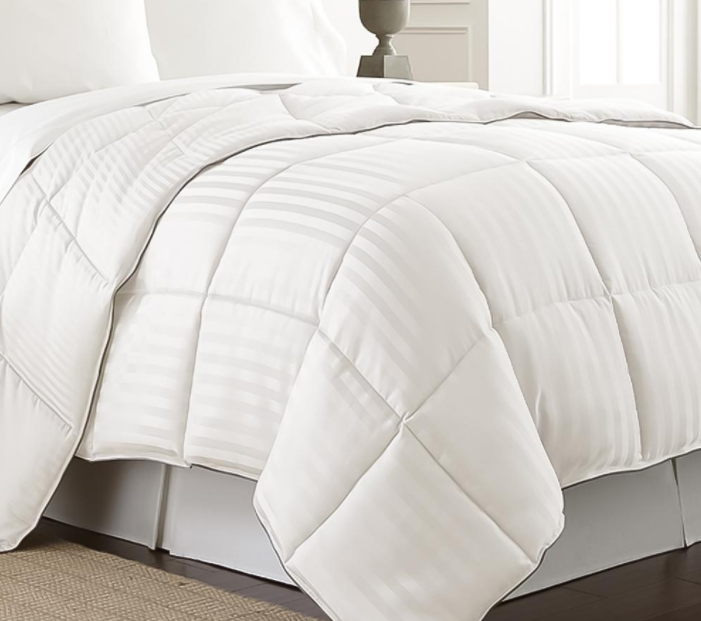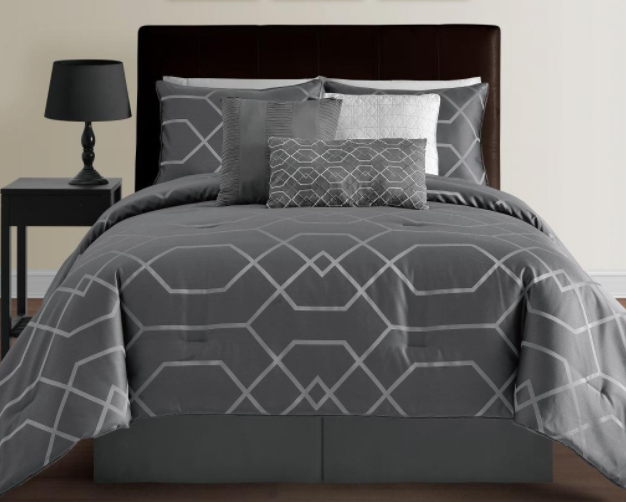
Duvet covers vs Comforters: What's the difference?

We are often asked in our Customer Service Department the same question over and over again: What is the difference between duvet covers vs comforters. Well, that is a great question with a somewhat simple answer.
What is a Comforter Exactly?
“Comforter” is a term most Americans are very familiar with. It’s the big fluffy blanket that goes on top of the sheets. Simple as that, right? In a nutshell, yes. However, we can add to this oversimplified definition: Comforters are often quilted to prevent the filling (typically synthetic fiber or down feathers) from shifting. This keeps the fill evenly distributed and keeps you comfortable while you sleep. Hence the name.
Comforters come in a huge variety of colors and patterns, and often times are available in a matching set. One big (pun intended) downfall of comforters, however, is their size. Have you ever tried stuffing a queen size comforter into your home washing machine? You’re looking at a disaster waiting to happen. Life, as they say, happens. Your comforter is very unlikely to stay as flawless as the day you purchased it. Sure, you can spot clean, but a spot cleaning is just that -- cleaning spots. Often times you will find your whole comforter needs a good cleaning.
This leads us to the duvet cover. But, wait a minute… where does the term “duvet” come from? Why not call it a “comforter cover”. To answer that question, we’ll travel across the pond to the United Kingdom.
What are Duvet Covers Used For?
“Duvet” is not a word you commonly find in American English. The simple definition is: a soft, flat bag filled with down or synthetic fibers. You won’t find the same quilting here as you would with a comforter. This does not seem like much of a difference, does it? In fact, sick days -- days off work -- are often called “duvet days” in the United Kingdom. A clever descriptor as you’ll likely not be leaving your duvet most of the day.
So what is the difference between a duvet cover and a comforter? A comforter is fluffy and thick bedding that is filled with either down or synthetic substitutes to keep you warm. Comforters are usually quilted in order to keep the filling in place. A duvet cover is a shell that covers the down comforter in order to keep it clean and adds a decorative addition to the bed.
Duvet vs Comforter: Despite the name and slight construction difference, you will still inevitably run into struggles when attempting to launder either. We have discovered a common flaw here. Both comforters and duvets are near impossible to wash at home, and I would venture to guess not many people want to go through the trouble of taking a comforter to a dry cleaner.
Sure, you can call it a comforter cover if you so choose, but the formal name for this blog’s purpose is “duvet cover”.
A simple analogy to summarize just what a duvet cover is: a duvet cover is to a comforter as a pillowcase is to a pillow. A duvet cover is essentially a comforter case. It allows you to restyle your bedding without purchasing a brand new comforter as well as providing protection. The single biggest advantage? Ease of cleaning. No longer do you have to try and cram a comforter into your poor washing machine. Simply remove the comforter from the duvet cover and wash the cover -- which is typically comparable to washing a heavy bed sheet. Wash, dry, replace. Easy as that.
Duvet Cover Plus Comforter? Good Move
Here are a few key things to consider when shopping for a duvet cover and/or comforter. Comforters do not require a duvet cover, however, it is not as easy to change your style on the fly without one. Comforters offer easy and comfortable elegance but do not launder easily without a duvet cover. Duvet covers are available in many thread counts.
For example, you could purchase a “light” 300 thread count duvet cover for those warmer months. However, higher thread count “heavy” duvet covers -- such as our 1200 thread count Egyptian cotton duvet cover -- will take your comforter to a whole new level of warmth.
Regardless of thread count and weight, we offer an expansive collection of colors. This is incredibly handy for those of us who like a change of decor every once in a while. Purchase a few different colors to store in your linen closet. Feeling like a fiery red? Slip your comforter in a red duvet cover. Feeling blue? Easy change -- grab your blue duvet cover. Put simply, comforters are the walls, and duvet covers are the paint.
Do you use a duvet cover? What other advantages are there? Chime in on the Duvet Covers vs. Comforter discussion below!








